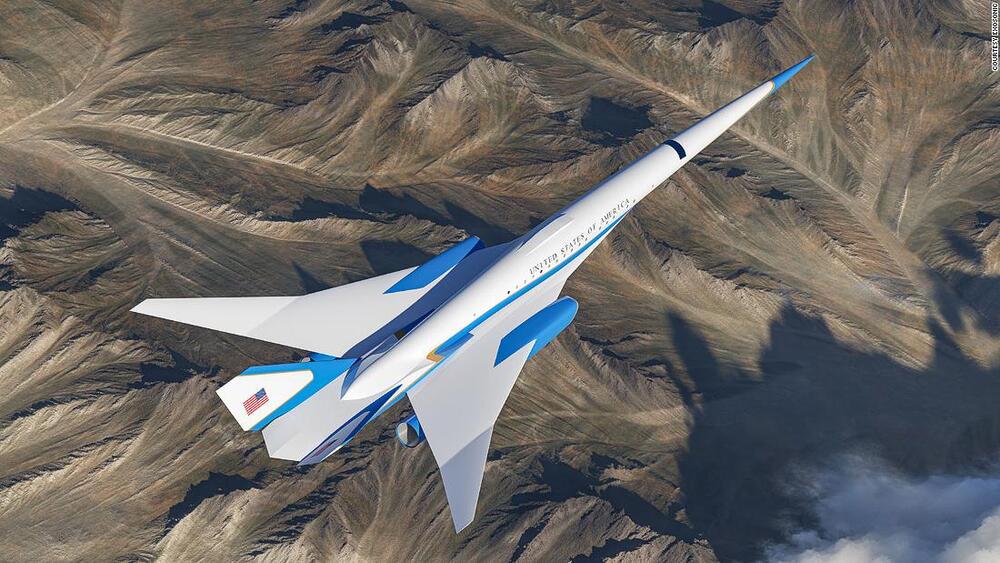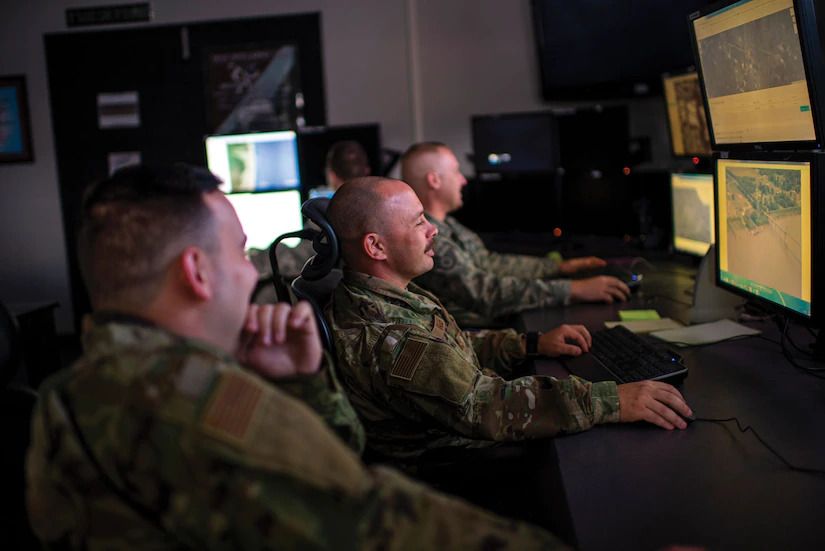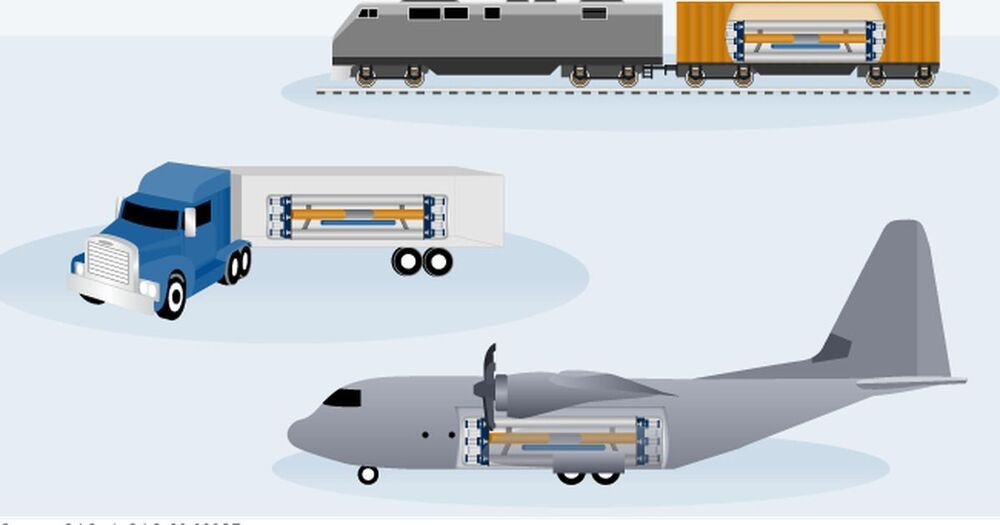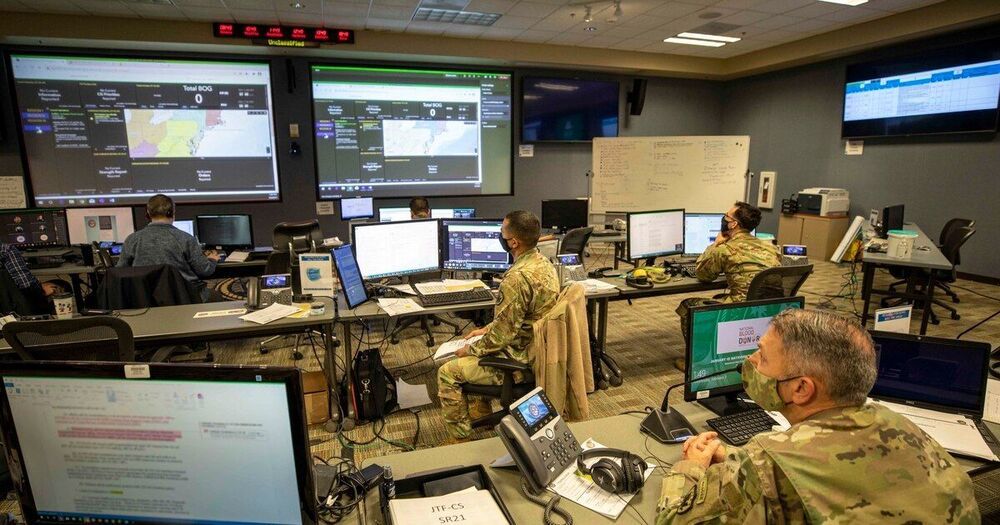Russia’s upgrading its arctic military arsenal! Check out its latest tactical nuclear weapon.



Exosonic isn’t the only aviation trailblazer to receive investment from the US Air Force.
Atlanta-based Hermeus Corporation is working on a hypersonic 20-seater that promises to deliver passengers from New York to London in 90 minutes.
California start-up Exosonic is developing a supersonic jet designed to one day carry the leaders of the US Executive Branch and their guests. CNN Travel got a sneak peek inside the plane.

Researchers at Tel Aviv University were able to reconstruct the nutrition of stone age humans.
In a paper published in the Yearbook of the American Physical Anthropology Association, Dr. Miki Ben-Dor and Prof. Ran Barkai of the Jacob M. Alkov Department of Archaeology at Tel Aviv University, together with Raphael Sirtoli of Portugal, show that humans were an apex predator for about two million years. Only the extinction of larger animals (megafauna) in various parts of the world, and the decline of animal food sources toward the end of the stone age, led humans to gradually increase the vegetable element in their nutrition, until finally they had no choice but to domesticate both plants and animals — and became farmers.
“So far, attempts to reconstruct the diet of stone-age humans were mostly based on comparisons to 20th century hunter-gatherer societies,” explains Dr. Ben-Dor. “This comparison is futile, however, because two million years ago hunter-gatherer societies could hunt and consume elephants and other large animals — while today’s hunter gatherers do not have access to such bounty. The entire ecosystem has changed, and conditions cannot be compared. We decided to use other methods to reconstruct the diet of stone-age humans: to examine the memory preserved in our own bodies, our metabolism, genetics, and physical build. Human behavior changes rapidly, but evolution is slow. The body remembers.”


For 50 years, AeroVironment has advanced UAV development. Today, the company is a Technology Solutions Provider at the intersection of four future-defining technologies: robotics, sensors, analytics and connectivity. Its culture of experimentation and R&D dates back to its founder, Dr. Paul MacCready Jr., whose achievements earned him the nickname “the father of human-powered flight”. From deploying the world’s most popular sUAS to designing the helicopter that’s en route to fly in Mars’ thin atmosphere, AeroVironment’s collective accomplishments provide a case study of imagination, innovation and collaboration — one that has and will bring effective solutions to frontlines, farms and frontiers, yesterday, today and tomorrow.
Leading the Way: UAS Capabilities – Onward and Upward
From solar-powered aircraft to the first hand-launched small UAS (sUAS) for military reconnaissance, AeroVironment literally launched the era of small aerial vehicles for environmental, commercial and defense purposes. For 35 years, the company has made its UAVs smaller and simpler, yet with multiple and ever-more-innovative functionality.

Colonel Mark M. Zais, chief data scientist at United States Special Operations Command (USSOCOM) stresses the importance of AI-related education in the DOD. In his 2020 CJCS Strategic Essay Competition first place Strategy Article, he says, “Without that education, we face a world where senior leaders use AI-enabled technologies to make decisions related to national security without a full grasp of the tools that they—and our adversaries—possess.”
With the release of its first artificial intelligence (AI) strategy in 2019, the Department of Defense (DOD) formalized the increased use of AI technology throughout the military, challenging senior leaders to create “organizational AI strategies” and “make related resource allocation decisions.”1 Unfortunately, most senior leaders currently have limited familiarity with AI, having developed their skills in tactical counterinsurgency environments, which reward strength (physical and mental), perseverance, and diligence. Some defense scholars have advocated a smarter military, emphasizing intellectual human capital and arguing that cognitive ability will determine success in strategy development, statesmanship, and decisionmaking.2 AI might complement that ability but cannot be a substitute for it. Military leaders must leverage AI to help them adapt and be curious. As innovative technologies with AI applications increasingly become integral to DOD modernization and near-peer competition, senior leaders’ knowledge of AI is critical for shaping and applying our AI strategy and creating properly calibrated expectations.
War is about decisionmaking, and AI enables the technology that will transform how humans and machines make those decisions.3 Successful use of this general-purpose technology will require senior leaders who truly understand its capabilities and can demystify the hyperbole.4 Within current AI strategy development and application, many practitioners have a palpable sense of dread as we crest the waves of a second AI hype cycle, seemingly captained by novices of the AI seas.5 In-house technical experts find it difficult to manage expectations and influence priorities, clouded by buzzwords and stifled by ambitions for “quick wins.” The importance of AI-related education increases with AI aspirations and the illusion of progress. Without that education, we face a world where senior leaders use AI-enabled technologies to make decisions related to national security without a full grasp of the tools that they—and our adversaries—possess. This would be equivalent to a combat arms officer making strategic military landpower decisions without the foundations of military education in maneuver warfare and practical experience.
Strategic decisionmaking in a transformative digital environment requires comparably transformative leadership. Modernization of the military workforce should parallel modernization of equipment and technology. In the short term, senior leaders require executive AI education that equips them with enough knowledge to distill problems that need AI solutions and that provides informed guidance for customized solutions. With the ability to trust internal expertise, the military can avoid overreliance on consultants and vendors, following Niccolò Machiavelli’s warning against dependence on auxiliary troops.6 In the long term, military education should give the same attention to AI that is provided to traditional subjects such as maneuver warfare and counterinsurgency operations. Each steppingstone of military education should incorporate subjects from the strategic domain, including maneuver warfare, information warfare, and artificial intelligence.

The military’s primary advanced research shop wants to be a leader in the “third wave” of artificial intelligence and is looking at new methods of visually tracking objects using significantly less power while producing results that are 10-times more accurate.
The Defense Advanced Research Projects Agency, or DARPA, has been instrumental in many of the most important breakthroughs in modern technology—from the first computer networks to early AI research.
“DARPA-funded R&D enabled some of the first successes in AI, such as expert systems and search, and more recently has advanced machine learning algorithms and hardware,” according to a notice for an upcoming opportunity.
The disturbing series of events during the summer of 2019 resulted in an investigation that made its way to the highest echelons of the Navy.

The two companies, along with Westinghouse Government Services, were each given preliminary contracts of less than $15 million in March 2020 to begin design work. The final design is due to the Strategic Capabilities Office in 2022, at which point the Defense Department will make a decision on whether to move forward with testing the systems.
“We are thrilled with the progress our industrial partners have made on their designs,” Jeff Waksman, Project Pele’s program manager, said in a statement. “We are confident that by early 2022 we will have two engineering designs matured to a sufficient state that we will be able to determine suitability for possible construction and testing.”
The Pentagon has long eyed nuclear power as a potential way to reduce both its energy cost and its vulnerability in its dependence on local energy grids. According to a news release, the Defense Department uses “approximately 30 Terawatt-hours of electricity per year and more than 10 million gallons of fuel per day.”

Microgrids can connect and disconnect from the grid. By operating on normal “blue-sky” operating days as well as during emergencies, microgrids provide uninterrupted power when the grid goes down — and reduce grid constraints and energy costs when grid-connected. Previously the sole domain of military bases and universities, microgrids are growing 15% annually, reaching an $18 billion market in the U.S. by 2022.
For grid resiliency and reliable power supply, there is no better solution than community-scale microgrids that connect critical infrastructure facilities with nearby residential and commercial loads. Funding feasibility studies and audit-grade designs — so that communities have zero-cost but high-quality pathways to constructable projects, as New York State did with the NY Prize initiative — is a proven way to involve communities in their energy planning and engage the private sector in building low-carbon resilient energy systems.
Unpredictability and complexity are quickening, and technology has its place, but not simply as an individual safeguard or false security blanket. Instead, technology should be used to better calculate risk, increase system resilience, improve infrastructure durability and strengthen the bonds between people in a community both during and in between emergencies.
